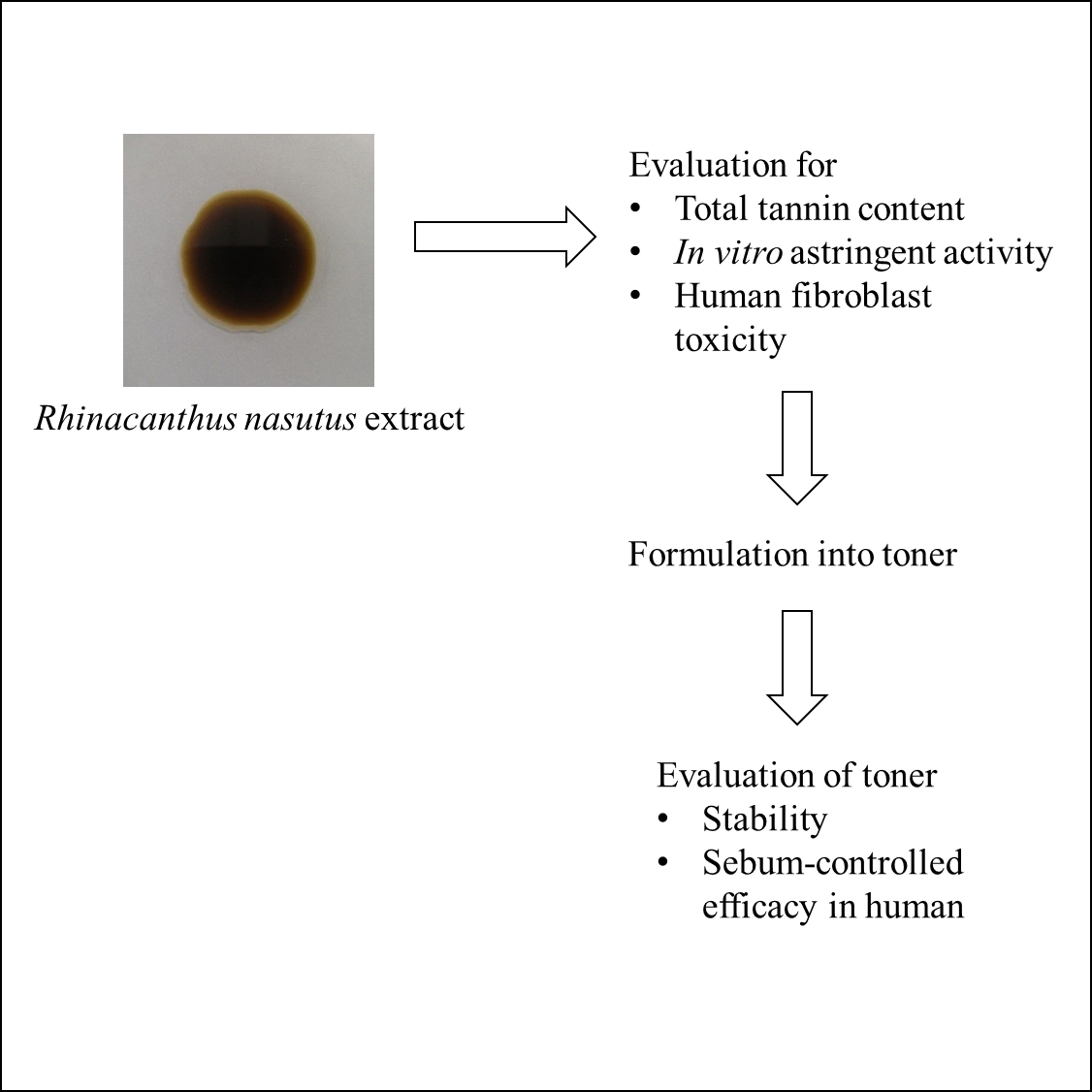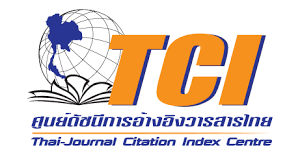Evaluation of Rhinacanthus nasutus for Utilizing as Sebum-controlled Facial Toner
Keywords:
Rhinacanthus nasutus, Tannin, Sebum-controlled, Oily skin, CosmeticsAbstract
Rhinacanthus nasutus has been officially registered as traditional herbal medicine since 2011 as a tincture form of medication. It has properties in treating skin diseases caused by fungus, ringworm, and athlete's foot. The major bioactive compounds in R. nasutus are rhinacanthins. For cosmetics, R. nasutus extract (RNE) has been formulated as shampoos, soap bars, and liquid soaps. However, facial toner with RNE has not yet been found. Therefore, an objective of this study is to develop a sebum-controlled facial toner containing RNE. The total tannin content was studied and compared using Folin-Ciocalteu colorimetric assay. The astringent test was studied on hemoglobin precipitation. RNE showed astringent activity at AC50 by 1.06 ± 0.08 mg/mL while tannic acid as standard showed astringent activity at AC50 by 0.03 ± 0.00 mg/mL. Cytotoxic effect against human fibroblasts was evaluated with sulforhodamine B assay, and the result showed that RNE was safe in a concentration range between 0.001 to 1.0 mg/mL. In the development of toner, RNE was selected at concentration level of 0.20 %w/w, based on cell survival and astringent activity. At this concentration, it had astringent activity at 58.04% cell survival rate at 73.04%. Stability of formulated toners were evaluated by 6 heating-cooling cycles. The results showed that all formulas had an appropriate stability profile. The result from this study suggested that in order to formulate an efficient sebum-controlled toner containing RNE, other plant extracts with high astringent potency should be further combined. Further studies on R. nasutus herb such as anti-collagenase and anti-tyrosinase activities should be considered to confirm the potential of using RNE as cosmetic products.Downloads









